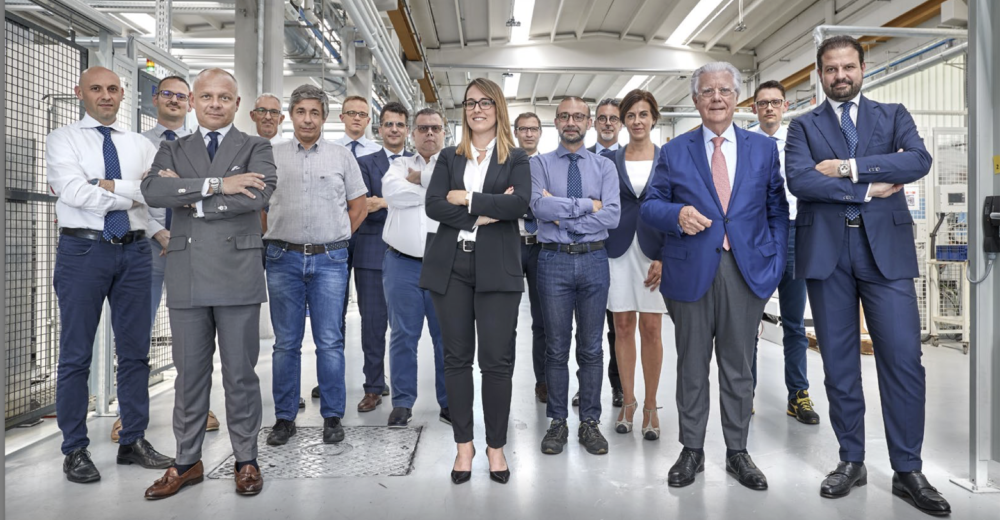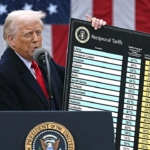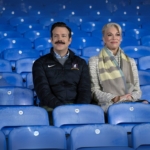Brainstorming? No, thanks!

Indice
Doing business means being in competition on the market, in direct or indirect competition with others. The only thing that matters is creating value for the customer, making them amazing.
Just as no architect designs a skyscraper lower than that of the neighbor, similarly no company introduces actions and acts with a goal other than success on the market, possibly greater than that of the competition, of the so-called “enemies”. It is for this reason that every company is looking for new ideas, because they are the engine of growth.
Successful ideas are the bricks to build the skyscraper, and the more successful ideas (and therefore bricks) are stacked, the higher the skyscraper will be.
Brainstorming? The perfect storm: many ideas, very confusing!
In some companies the search for ideas is entrusted to the creativity of individuals (we talked about it in another article that you can read here).
In many others, brainstorming is the most common way to hunt for ideas because it is less solitary, more engaging and more controllable than relying on the individual genius of one or a few resources in the company.
Brainstorming sessions appear in the Outlook calendars of the people involved; they are organized moments whose purpose is to bring out different possible alternatives to solve a problem. Often the measure of success of a day of brainstorming is the length of the list of ideas generated, even if rather confused and scribbled on a sheet of paper or post-it.
What often happens, unfortunately, is that entrepreneurs and managers are not fully satisfied with the ideas that emerged, or that – after a hard day of generating ideas – those ideas are lost, nothing is written, or nothing is done.
The limits of brainstorming sessions
The ineffectiveness of brainstorming sessions can be traced back to some elements that characterize brainstorming itself and the way these idea-generating sessions are conducted.
- Lack of stimuli Entrepreneurs (and managers) are often linked to an imaginary of innovation – the result of genius and impromptu insights – which does not correspond to reality.
Instead, it is essential to expose ourselves to well-structured stimuli that affect our mind and give rise to unexpected sparks. It is not magic, but the ability of our brain to regenerate itself under new stimuli when it is properly administered.
The process of selecting and structuring stimuli plays a fundamental role which, if not carried out well, generates an undesirable outcome: great chaos that increases the manifestation of a previous fear (false and unfounded): possessing a capacity for ingenuity that has now faded, or worse still, a belief of inadequacy. - Excessive zoom in (i.e. starting from the product). We are always obsessed with products, but what is valuable to the customer is often a topic that is not explored. The biggest failures of innovation lie in launching a solution on the market that nobody cares about. The fact that you like it is irrelevant, or rather, it takes a back seat; the market must like it, that is, it must solve a problem for the people who will buy your solution. This is the only thing that matters.
- Excessive zoom out (i.e. starting from a mega trand). It is important to understand where the world, your sector and neighboring sectors are heading. So, I’m not saying that knowledge of mega trends is irrelevant to stimulate sparks in the mind, quite the contrary!
It is essential, however, to be guarantors of the effectiveness with which these stimuli are administered. Refer to real solutions, interpretations of a given trend that others have already given. Also, be careful not to consider trends and fashion in the same way. - More is better. The expected result of a brainstorming session is to produce as many ideas as possible. This expectation is intrinsic to the very nature of brainstorming, according to which the greater the number of ideas, the higher the probability of success. Instead, be aware that “more” is not synonymous with “better”. Furthermore, it will take a long time to analyze so many ideas, and you need to be aware that company resources are available in a quantity that is certainly not infinite, indeed much more than finite.
- Building too much on the ideas that have emerged. Brainstorming is a method that encourages people to build and reflect from the ideas of others. Based on this assumption, it is easy to understand why the excessive number of ideas is a high risk factor: people are led to spend a lot of time working on an idea that, may be discarded at the end of the brainstorming day because it is considered less interesting than others. Furthermore, what happens is that the first ideas analyzed during the brainstorming day could be discussed at length, but as the end of the time is approaching, the timid time will force the pace to accelerate and the last points on the list of ideas will be discussed – in fact – almost for nothing. This will lead to the elimination of some ideas, perhaps without having analyzed them sufficiently, a rather obvious result since we are inclined to trust less of what we know less, or on which we have little information.
- Role effect. In brainstorming sessions, managers and their resources are all sitting at the same table, and sometimes entrepreneurs also participate. Receiving contributions from more than one person at different hierarchical levels can certainly enrich the result of exploring new ideas. The problem is how this happens. Direct comparison of different roles can create a “role effect”, meaning that subjects may feel the need not expose themselves, especially after the first corrective comment by their boss (one example above all: “this idea is not good”).
Workshop Idea Generation: a structured and effective method!
If these are the limits connected to the very nature of the brainstorming sessions, how can we generate impact ideas and how can we choose which ones to develop? In other words, how do we decide that some ideas have higher potential (for development, innovation, impact and success) than others?
To do this you need to rely on a structured innovation process, the High Impact Innovation model tested by Lenovys with many companies, to avoid critical brainstorming and to avoid feeling dissatisfied despite the long working days dedicated to the generation of ideas.
1. Select people from different functions.
It is important to work with all business functions so that they bring their knowledge and voice of their function to bring out critical aspects and possible solutions from the earliest stages of developing an idea.
2. Prepare the explorations.
Explorations are structured stimuli that allows you to look outside the company, its market, and the market of other, different sectors.
This is the time to tell yourself what you are not good at, what problems customers have, why you cannot capture new customers, etc.
Always do more than one exploration (up to a recommended maximum of 3) always starting from the customer’s problem, not the product or the big trend of the moment.
The explorations are based on evidence, facts, reality reports and not perceptions.
3. Work in small, cross-functional but symmetrical groups.
All business functions can participate in the generation of ideas, but in groups composed of people of equal hierarchy to avoid role effects.
The moment of idea generation in plenary, in fact, is extremely confusing and gives space to digressions and comments on ideas that are not certain that they will then be selected for further development.
In addition, each group, for each exploration, will be required to generate at least 2 ideas, so as not to get caught in the loop of falling in love with the idea. This will also govern the number of ideas generated by each exploration.
4. Share in plenary.
As we said, ideas are just a title written on a piece of paper. Let one person per group present the ideas generated by their group. The other participants will immediately try to give their interpretations, to propose different ways to develop that idea.
And that’s the point: an idea has more than one way to be realized. The presence of a moderator is important to understand how far to go in comparison: not to spend too much time on a single idea, to stimulate the generation of different ways to do something, to support and push to go into unknown terrain, beyond what is the “normal” company, the modus operandi already well known and consolidated.
5. Merge and delete.
Make a list of the ideas that emerged and combine those similar. Eliminate ideas that limit themselves to improvements of existing solutions, not because they are not valuable, but because those ideas can already be conveyed in traditional business channels for implementation.
6. Build on ideas.
Each working group will be given some of the ideas that have emerged, so that they are taken to a later stage of development which helps to understand something more about the idea itself and what potential impact it could have on the market.
7. Formalize the construction of impact proposals.
To ensure that it is not just words, the groups are asked to use a standard tool (Solution brief) to formalize the main features of the impact proposal, identifying only the relevant information to define whether that idea is of value for the company and avoid an excessive construction in case there was not enough recognition of value for the company and/ or the end customer.
To generate successful ideas, therefore, no effort is needed, but it is necessary to channel the effort into different and structured processes. There is no need for new people but manage today’s employees so that they develop discipline towards the new processes and executive autonomy.The company model that combines executive (processes) and organizational effectiveness (resources) is the Lean Lifestyle Company, a company capable of achieving more results with less effort.
“High impact innovation” is one of the key principles of the Lean Lifestyle Company that never neglects the management of innovation and does not entrust it to the extemporaneous genius of some corporate component (an employee, an external consultant, or a whole department).
Applying the process of High Impact Innovation and structuring workshops for idea generation in place of the more classic “brainstorming”, therefore, is a first step to approach innovation in a different way, combining vision (the ability to look far) and pragmatism (the ability to ground the vision) expressing in concrete a characteristic of the Lean Lifestyle Company that is able to reconcile elements considered in contrast in classic business models.
We report here the entire text of the principle “High impact innovation” extracted from the Manifesto of the Lean Lifestyle Company promoted by Luciano Attolico.
HIGH IMPACT INNOVATION
We never want to stand still and passively watch what happens around us. We will innovate to change the existing for the better: processes, products, technologies, business models. And we will do it with a high impact, not chasing trends and inventions of the last hour, but trying to achieve tangible impacts for the market and for the company itself. In an era of great and rapid changes, a Lean Lifestyle Company prepares its people continuously to welcome with curiosity all those evolutions that allow them to give more value to the customers, greater flexibility and agility with the companies, and a better quality of life for people. It is a company that always has a reservoir of structured ideas ready to become solutions. It will never have an innovation project of a single person or a single department, but always the business project of a multidisciplinary team that from the beginning addresses with method the various phases of development, from idea to solution launched on the market.
“A Lean Lifestyle Company continuously prepares its people to welcome with curiosity all those evolutions that allow them to give more value to the customers, more flexibility and agility to the companies, and better quality of life to the people.
It is a company that always has a reservoir of structured ideas ready to become solutions.”
In the previous article we discussed the theme of creativity, and we tried to understand why relying on the ideas of the “genius” is not the best strategy in the company to always have ideas and innovation projects to increase margins and revenues.
>>READ HERE THE IN-DEPTH ARTICLE
Articolo a cura di:

Cecilia Angioletti
Manager
Act as a consultant, supporting clients in the reorganization of business processes with the aim of continuous improvement, product innovation, process and service.
Experience in coordinating international research projects and manufacturing process modelling skills.
Since 2015, Cecilia has been working on international innovation management and high-impact innovation projects to transform strategies, processes and customer tools, generating sustainable business results and value.
Read more
Prossimi eventi










